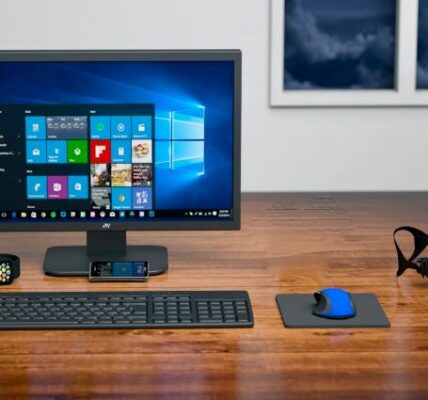In today’s digital age, cyber attacks are becoming increasingly common and can wreak havoc on your desktop computer. Whether you use your computer for work, personal purposes, or both, it is essential to take steps to protect it from potential cyber threats. To help you secure your desktop computer against cyber attacks, here are some essential tips to follow:
1. Keep Your Operating System Updated:
One of the most crucial steps you can take is to ensure that your operating system is always up to date. Regularly installing the latest patches and updates helps protect against known vulnerabilities and strengthens your computer’s defenses against cyber attacks.
2. Install Reliable Antivirus Software:
Invest in reputable antivirus software and keep it updated with the latest virus definitions. Antivirus software scans your system for malware, viruses, and other malicious programs, preventing them from compromising your computer’s security.
3. Enable Firewall Protection:
Enable the firewall on your computer to act as a barrier between your system and potential threats on the internet. Firewalls monitor incoming and outgoing network traffic, blocking unauthorized access and suspicious connections.
4. Use Strong, Unique Passwords:
Create strong passwords using a combination of uppercase and lowercase letters, numbers, and special characters. Avoid using easily guessable information such as birthdays or pet names. Additionally, use a different password for each online account to prevent multiple accounts from being compromised if one is breached.
5. Be Cautious of Phishing Attempts:
Cybercriminals often use phishing attacks to trick unsuspecting users into revealing sensitive information. Be cautious when opening emails, clicking on links, or downloading attachments from unknown sources. Check for signs of phishing, such as misspelled URLs or suspicious email addresses.
6. Regularly Backup Your Data:
Create a backup of your important files and documents regularly. This way, if your computer is ever compromised, you can easily restore your data to its original state and minimize potential losses.
7. Avoid Suspicious Websites and Downloads:
Be cautious when visiting websites or downloading files from untrustworthy sources. Stick to reputable websites and always verify the legitimacy of downloads before executing them.
8. Utilize Two-Factor Authentication:
Enable two-factor authentication (2FA) whenever possible. This adds an extra layer of security by requiring a second verification step, such as a fingerprint, a text message code, or a security token, in addition to your password.
9. Stay Updated on Security Threats:
Keep yourself informed about the latest security threats and cybersecurity best practices. Regularly check for updates from reliable sources and stay vigilant to new attack techniques, ensuring you are well-prepared to defend against them.
10. Educate Yourself and Others:
Increasing your knowledge about cybersecurity and keeping up with ongoing learning is crucial. Share your knowledge with family, friends, and colleagues, promoting safe practices and creating a more secure online environment for everyone.
By following these essential tips, you can significantly enhance the security of your desktop computer and protect it against cyber attacks. Remember, cybersecurity is an ongoing process, so make sure to stay proactive and keep your defenses up to date.





